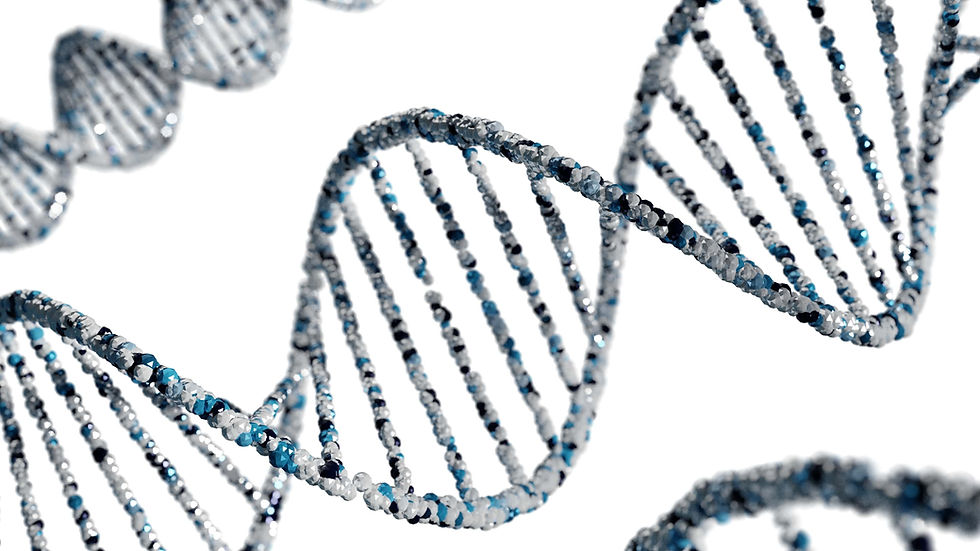Don't Be Fooled: Foods You May Think Are High Protein, but Aren't.
- leylew
- Aug 22, 2024
- 3 min read
Updated: Apr 4
I’ve lost count of the times I’ve heard someone declare, “Peanut butter is high in protein, right?!” While it’s true that peanut butter contains protein, the question is: is it the best source of protein for your calorie buck?
Let’s clear something up: “High” is a relative term. Just because a food contains protein doesn’t mean it’s the most efficient way to get your fill. For example, imagine eating 800 calories of
peanut butter to get 30 grams of protein. That’s a lot of calories for a relatively modest amount of protein! Wouldn’t you rather get the same amount of protein for less than half the calories?
That’s what we're going to learn about today!
We’re about to dive into some commonly believed “high protein” foods and see if they really stack up when it comes to protein per calorie.
Important note: This isn’t a condemnation of these foods! Many of them are nutrient-dense and whole, which are fantastic qualities. However, there are even better options out there if you’re looking to maximize your protein intake while minimizing calorie consumption.
Ready to learn which foods are true protein powerhouses? Let’s get started!
Despite being labeled 'high-protein,' some foods are actually higher in carbs and fats. While not bad, they're not ideal for boosting protein and managing calories. Choose wisely!
For high protein, opt for lean animal proteins, fish, egg whites, and reduced-fat dairy. They deliver more protein without excess carbs and fats.

Let's take a look at some more examples of foods thought to be high protein and how much/how many calories you'd need to consume to hit 30 grams of protein. I think you'll be surprised!

While lentils do offer a decent amount of protein, the majority of their nutritional content comes from complex carbohydrates. This makes them a filling and energy-providing food, but not the best choice for getting your protein in!

Hummus, while a healthy and flavorful dip, contains more fat than protein. The primary fat source comes from tahini, a sesame seed paste essential to the classic hummus recipe. While chickpeas do provide some protein, the fat content is significantly higher, making hummus a delicious but calorie-dense option.

Peanut butter is primarily a source of fat. While it does contain protein, the majority of its calories come from healthy unsaturated fats. These fats contribute to its creamy texture and rich flavor. While protein is often associated with peanut butter, it's essential to recognize that fat is the dominant macronutrient in this popular spread making it very calorically dense.

Just like its creamy counterpart, whole peanuts, are primarily a source of fat. While delicious and crunchy, it's important to note that the majority of a peanut's calories come from the macronutrient fat, and therefore, you'd need to consume 690 calories of peanuts to reach 30 grams of protein!

While quinoa is often lauded for its protein content, it's primarily a carbohydrate source. It shouldn't be considered a primary protein source in your diet as it would take over 800 calories to reach 30 grams of protein with quinoa alone!

Whole wheat bread is primarily a source of carbohydrates. Each small slice contains around 12 grams of carbohydrates, which provide the body with energy. While whole wheat bread does offer some protein, typically around 3 grams per slice, it's the complex carbohydrates that make up the majority of its macronutrient content making it a less than ideal source for protein!

Whole milk is a significant source of carbohydrates, primarily lactose. While it's also rich in protein and fat, the sugar content in milk contributes notably to its overall calorie count. You would need to consume 581 calories to reach 30 grams of protein from whole milk!

Black beans are primarily a source of carbohydrates, not protein. While they do offer some protein, their main macronutrient is carbohydrates. These carbohydrates are complex and rich in fiber, contributing to feelings of fullness and aiding in digestion, but you would still have to consume a large amount to reach 30 grams of protein, over 450 calories worth!
It's essential to read food labels carefully and understand the nutritional content of what you're consuming. While many foods are marketed as "high-protein," their macronutrient breakdown might tell a different story. By making informed choices and prioritizing lean proteins, you can effectively boost your protein intake while managing your calorie and carbohydrate consumption. Remember, a balanced diet is key to overall health and well-being!
Ready to take control of your nutrition and achieve your health goals? Book a free discovery call with me to create a personalized plan tailored to your needs. Let's work together to help you feel your best!





コメント